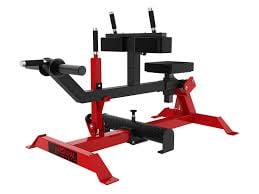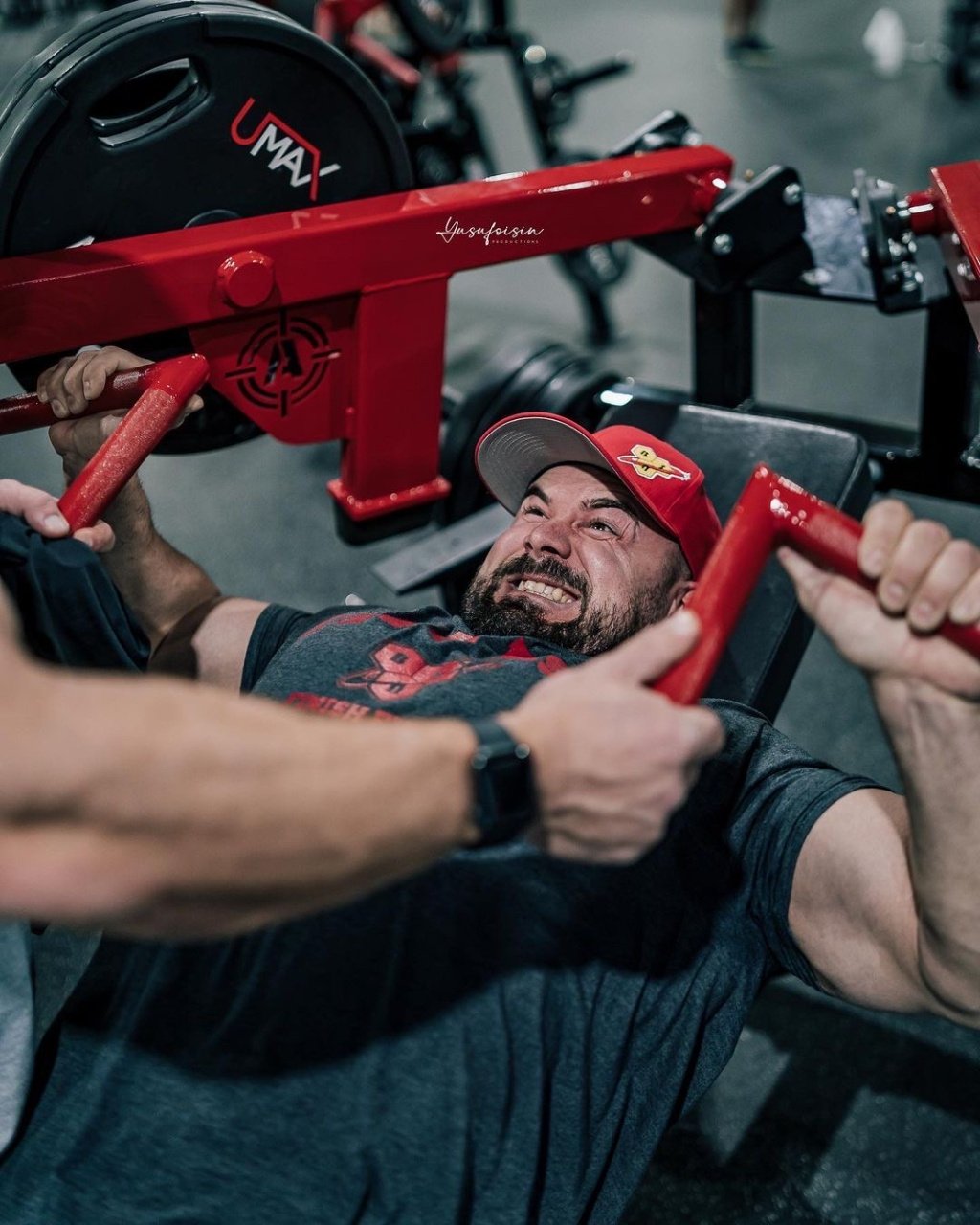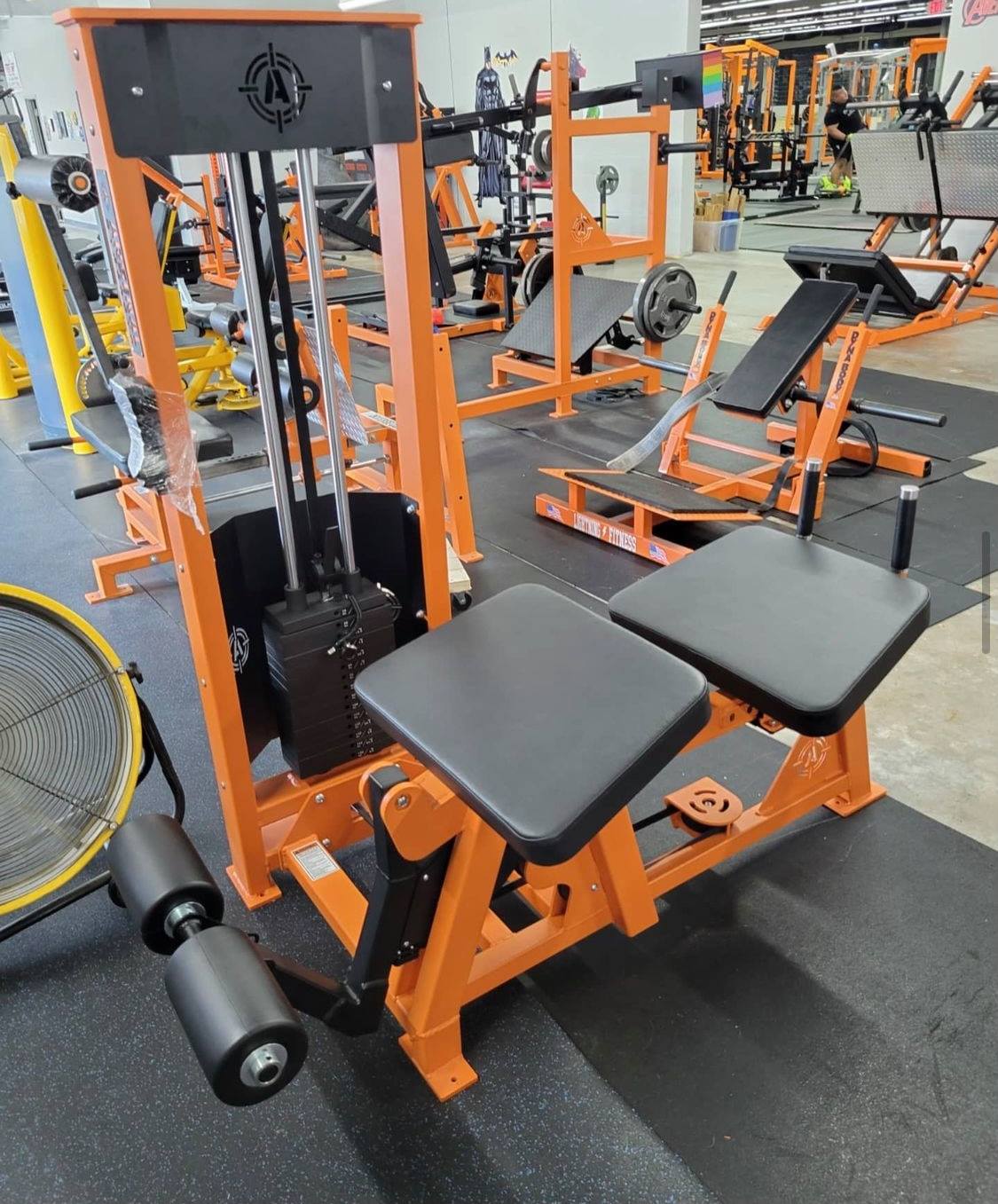Step Up Your Fitness: 7 Key Benefits of Calf Raises for Stronger Legs
Curious about the benefits of calf raises? These exercises do far more than shape your lower legs. With the ability to improve stability, prevent injuries, and support daily functions, calf raises are a fundamental part of a well-rounded fitness regimen. Dive into our exploration of how calf raises can bolster your leg workouts and everyday mobility.
- Calf raises improve balance, enhance athletic performance, and are essential for everyday movements such as walking and jumping.
- The anatomy of the calf consists of two muscles, the gastrocnemius and the soleus, both crucial for lower leg strength and mobility.
- Regular practice of calf raises can prevent injuries, improve posture, and aid in running efficiency, while also being versatile enough to suit all fitness levels.
The Power of Calf Raises: Why They Matter
Everyday movements such as running, walking, and jumping rely heavily on calf strength, which plays a significant role in overall performance and well-being. Calf raises, in particular, are a potent exercise for fitness improvement since they focus on building strength and defining muscles in the lower legs. They help burn calories which contributes to overall fitness enhancement.
The best part? Calf raises are adaptable and beneficial for individuals at all fitness levels, making them a versatile addition to any workout routine.
Enhanced Athletic Performance
Enhanced calf muscles can augment performance in a variety of sports and physical activities, also decreasing the risk of chronic pain or injuries. Possessing strong calves allows for greater participation in a variety of activities, boosts self-confidence, and provides increased control over one’s body, while weak calves may limit these benefits.
The gastrocnemius muscle, in particular, plays a critical role in explosive movements like running and jumping, more so than the soleus muscle. Strong calves are especially important for generating power in vertical jumps, providing a significant advantage in sports such as basketball, volleyball, and netball.
Everyday Movement Benefits
Calf raises, which build strength in the calf muscles and increase ankle joint mobility, can amplify overall balance and control, thereby fostering proprioception and stability in the lower extremities. They can be integrated into everyday activities, even while brushing your teeth, aiding in maintaining the health of the lower limbs and preventing musculoskeletal disorders.
Anatomy of the Calf Muscles
Comprising two distinct muscles, the gastrocnemius and the soleus, the calf muscle facilitates movement and stability in the ankle joint. The standing calf raise primarily targets the gastrocnemius muscle. The soleus muscle works predominantly to perform plantar flexion of the foot, lifting the heel against gravity during movements like walking or jumping.
Both the gastrocnemius and soleus muscles form the triceps surae group and insert on the calcaneus bone of the heel via the Achilles tendon.

Gastrocnemius Muscle
The gastrocnemius muscle consists of two heads – the medial and lateral – which originate from the femur and converge into the Achilles tendon. The medial head originates from the epicondyle and the posterior surface of the medial condyle of the femur, while the lateral head originates from the lateral surfaces of the epicondyle of the femur.
When the knee is flexed, the gastrocnemius muscle’s contribution to plantar flexion is reduced.
Soleus Muscle
The soleus muscle:
- Originates from specific areas on the tibia and fibula
- Forms a wide belly that contributes to the Achilles tendon
- Is situated deep to the gastrocnemius muscle
- Receives nerve signals through the anterior rami of S1 and S2 spinal nerves via the tibial nerve.
Blood is delivered to the soleus muscle primarily through the posterior tibial artery and vein, with additional support from the peroneal artery and lateral sural arteries.
Top 7 Benefits of Calf Raises
Calf raises are instrumental in improving overall fitness and leg strength, and they also enhance muscle flexibility. Regular performance of calf raises leads to:
- Improved balance
- Increased ankle stability
- Prevention of lower leg injuries
- Strengthening of the muscles around the ankles and lower leg
Calf raises also aid in recovery by strengthening the muscles around the ankles and lower leg.
Strong calf muscles attained from calf raises support enhanced posture, both in daily activities and during exercise.
Improved Balance and Coordination
Important neuromuscular adaptations that improve balance, especially in the elderly, can be achieved through calf raises, thereby helping reduce age-related mobility loss. Regular calf-raise training reduces muscle activations of the gastrocnemius and soleus during standing, which indicates an improvement in balance performance.
Single leg calf raises not only improve lower body strength but also significantly enhance balance and body control through targeted muscle strengthening and increased range of motion at the ankle joints. Maintaining a controlled tempo and proper breathing during calf raises is vital for maximum balance-enhancing benefits, helping to stabilize the core and provide rhythm.
Increased Ankle Stability
Enhanced calf muscles can provide several benefits, including:
- Reinforcing ankle stability
- Reducing the risk of ankle-related injuries
- Strengthening and mobilizing the ankle joint
- Strengthening surrounding ligaments, tendons, and foot muscles
- Improving foot and ankle strength and mobility
One effective exercise to perform calf raises and achieve stronger calf muscles is calf raises.
Boosted Running Efficiency
By adding muscular output and explosiveness, calf muscles play a vital role in enhancing running mechanics. During running, especially in the toe-off phase, strong calf muscles propel individuals upward and forward. Improved calf strength affects running pace and stride length by enhancing the push-off with each step.
Prioritizing calf strengthening leads to enhanced running and sprinting performance, better ankle strength and stability, and a reduced risk of injuries.
Injury Prevention and Recovery
Everyday movements such as walking and running require strong calf muscles. They also help to provide stability and support to the lower body, reducing the risk of injuries during physical activities. Having weak calf muscles can limit your ability to perform daily activities, as well as impact your balance and stability. Additionally, it may increase your susceptibility to ankle and lower-leg injuries. However, strong calf muscles can help prevent ankle sprains and other ankle-related injuries.
Strengthening calves through calf raises can lead to improved ankle stability. This can benefit athletes by enhancing their ability to stabilize themselves during various athletic movements. Incorporating dynamic and static stretching into the calf workout routine can help improve the range of motion and prevent injuries.
Enhanced Posture
The gastrocnemius muscle, located at the back of the lower leg, plays a fundamental role in walking and maintaining proper posture. The soleus muscle, predominantly made up of type 1 slow, fatigue-resistant fibers, is considered an anti-gravity muscle essential for an upright posture, along with other antigravity muscles such as the leg extensors, gluteus maximus, and back muscles.
Calf raises, one of the most effective calf exercises, target the strengthening of the muscles responsible for ankle and knee stabilization, which are crucial for achieving and maintaining good posture.
Versatility and Convenience
Offering several modifications, calf raises can be performed barefoot or in shoes to align with individual preferences and goals. Due to the simplicity of the movement, calf raises can be conveniently executed in a variety of environments, whether standing or seated.
The exercise is accessible to people of all fitness levels, with options to do calf raises on one leg at a time or using both legs simultaneously for balance and symmetry. For those seeking a more challenging workout, weights can be added to calf raises to increase resistance and intensity.
Calorie Burning and Weight Loss
The energy expenditure required by calf raises contributes to calorie burning. While calf raises do not burn as many calories as some high-intensity exercises, they are still a valuable addition to a calorie-burning workout routine. Incorporating calf raises into a workout regimen can support weight loss goals when paired with a balanced diet and overall exercise plan.
Calf raises target the lower body, helping to tone the muscles, which can indirectly lead to a more efficient metabolism and greater calorie burning in the long term. The total calorie burn from calf raises, in the context of a full body workout routine, may contribute to an increased overall energy expenditure.
Perfecting Your Calf Raise Technique
A beginner-level exercise, standing calf raises can optionally be executed using an exercise or yoga mat. Beginners should start calf raises on a flat, stable surface and may hold onto something for balance. A typical range for repetitions of standing calf raises is between 10 to 30 per session. To target different calf muscles, the foot position can be varied with inward toes to focus on inner calf muscles and outward toes for outer calf muscles.
For more advanced individuals, the challenge can be increased by enhancing the range of motion, adding weight, or executing calf raises without support. When doing standing calf raises, it’s important to avoid common mistakes to maintain the exercise’s safety and effectiveness.
Starting Position
Feet should be shoulder-width apart with toes pointing forward to establish a solid foundation for calf raises. Maintain a straight back and keep shoulders back and down to promote good posture and spinal alignment during the exercise, ensuring the proper form.
Abs should be pulled in to support the core and stabilize the body throughout the movement.
Movement and Control
The heels are properly lifted in calf raises by pushing through the ball of the foot, resulting in a full range of motion and maximal contraction at the top. While lowering the heels, it is important to maintain control and allow them to descend just past the toes for a full calf muscle stretch before lifting again. Slow and controlled repetitions during calf raises are crucial for muscle growth and strength improvement, as they place the right amount of tension on the calf muscles.
During calf raises, one should:
- Raise the heels slowly
- Keep the knees extended but not locked
- Pause at the peak
- Lower the heels back down slowly to maintain control throughout the exercise.
Breathing Technique
It is generally advisable to maintain a regular breathing pattern during calf raises. When performing calf raises, you should exhale while raising the heels and squeezing the calves.
During the descent phase of calf raises, you should inhale when lowering the heels back to the starting position.
Calf Raise Variations for All Levels
The versatility of calf raises allows them to be performed using a variety of equipment – machines at the gym, dumbbells at home, or simply body weight – making them adaptable to different settings. To increase the range of motion during calf raises and potentially boost their effectiveness, performing the exercise on a step or stair allows the heels to drop down further.
Variations of calf raises include:
- Seated calf raises, which target the soleus muscle
- Single leg calf raises that increase intensity and focus on balance
- Weighted calf raises for those seeking a greater challenge
Seated Calf Raises
To perform seated calf raises, follow these steps:
- Position the balls of your feet on the platform with heels hanging off.
- Set the weight on the machine.
- Adjust the thigh pad so that it is snug against your thighs.
- Ensure that your knees are directly over your ankles.
- Engage your calves by flexing your feet.
- Extend your feet to lift the weight.
- Lower your heels below the level of your toes to complete the full range of motion.
An effective variation of the seated calf raise is the pause calf raise, where you hold the weight at the top and bottom of the exercise for 2-3 seconds to further emphasize the calf muscles and ensure appropriate weight is used.
Seated calf raises primarily target the soleus muscle, providing a suitable exercise for those who have difficulties with balance during standing exercises.

Single Leg Calf Raises
To perform single leg calf raises:
- Stand up straight with a neutral spine.
- Lift the heel off the ground on one foot.
- Rise onto the ball of that foot.
- Pause for a moment.
- Lower the heel back down in a slow and controlled manner.
Single leg calf raises involve a concentric action of the calf muscle paired with flexion at the ankle joint, isolating and engaging the calf muscles in a low-impact manner.
Weighted Calf Raises
Seated dumbbell calf raises offer an alternative way to perform weighted calf raises by sitting, elevating the balls of your feet, and placing dumbbells on your thighs for added resistance.
Tips for Incorporating Calf Raises into Your Workout Routine
As they enhance balance and strength in the lower body, crucial for performance in diverse sports and activities, calf raises are a vital component of a workout regimen. Standing calf raises can be conveniently carried out at home, in the gym, or while traveling, making them a flexible addition to any fitness plan.
Beginners should start performing calf raises by following these steps:
- Find a stable, flat surface.
- Use your bodyweight and start with a smaller range of motion.
- You can use support for balance if needed.
- Start by performing 10 to 30 calf raises. This range is recommended to effectively work the muscles without overtraining.
Frequency and Repetitions
For beginners, starting with three sets of 10 to 12 repetitions for single leg calf raises is advised. For general strength and growth, a routine of calf raises 2-3 times per week is recommended. To specifically target calf growth, increasing training frequency to 4-5 times per week can be beneficial, but care must be taken to avoid overtraining and injuries.
Combining with Other Exercises
For an optimized leg workout, calf raises can be combined with exercises that target various leg muscles. Here are some exercises you can pair with calf raises to enhance lower body strength and balance:
- Squats for the quadriceps
- Different deadlift variations for the hamstrings
- Lunges or step-ups for overall development
- Swiss ball hamstring curls or glute bridges for hamstrings
- Seated and standing calf raises
Including these exercises in your routine will help you achieve a comprehensive leg workout.
Free weight movements like squats and lunges can enhance the effectiveness of a leg workout that includes calf raises, due to their superior coordination, balance, and stabilization benefits over machine-based exercises. Incorporate both standing and seated calf raises into a balanced workout to distinctively target different muscles within the calves, alongside exercises for the tibialis anterior to counterbalance calf muscle development.
Calf raises are a versatile and essential part of any fitness routine. They offer a myriad of benefits from enhancing athletic performance, improving balance and coordination, to boosting running efficiency and aiding in injury prevention. With various modifications available to match individual fitness levels and goals, calf raises can be integrated seamlessly into your workout routine. So, why not step up your fitness game and start incorporating calf raises today?
Frequently Asked Questions
Are calf raises beneficial?
Yes, calf raises are beneficial as they can improve ankle mobility, prevent injuries like Achilles tendinitis and plantar fasciitis, and strengthen and improve the flexibility of calf muscles.
Is it OK to do calf raises everyday?
Yes, it is generally okay to do calf raises every day and it can show results with consistent practice. Try incorporating calf raises into your daily routine for potential benefits.
Will calf raises give you bigger calves?
Yes, calf raises can help increase calf size, and you can achieve this whether you use light weights and many repetitions or heavy weights and few repetitions. Try including standing calf raises in your workout routine to target and strengthen your calf muscles.
What are the benefits of calves?
Strong calf muscles can improve running mechanics, leading to better speed and endurance and helping prevent calf pain and fatigue. So, it's essential to keep your calves strong for optimal running performance.
How do calf raises improve balance and coordination?
Calf raises improve balance and coordination by strengthening muscles and increasing ankle joint flexibility, contributing to important neuromuscular adaptations. This is particularly beneficial for the elderly.
Additional Resources:
Arsenal Strength Seated Calf Raise In Action:
Bilateral Leg Press: https://www.youtube.com/watch?v=0FOAfwG8lCI
Pendulum Squat Machine: https://www.youtube.com/watch?v=jnWgrCYSVLM
Belt Squat Machine: https://www.youtube.com/watch?v=7l1kU5j6Shk






